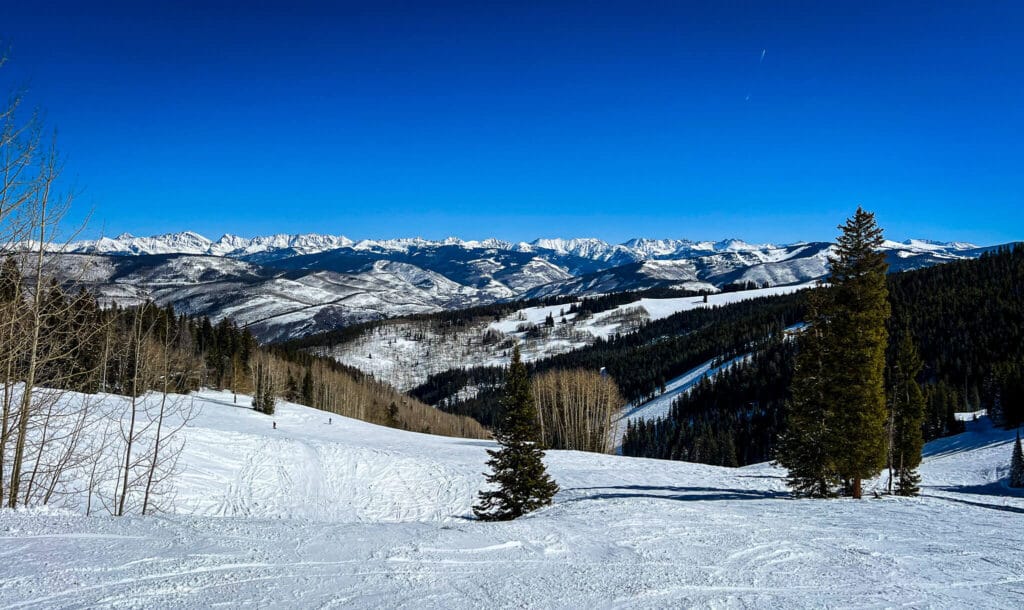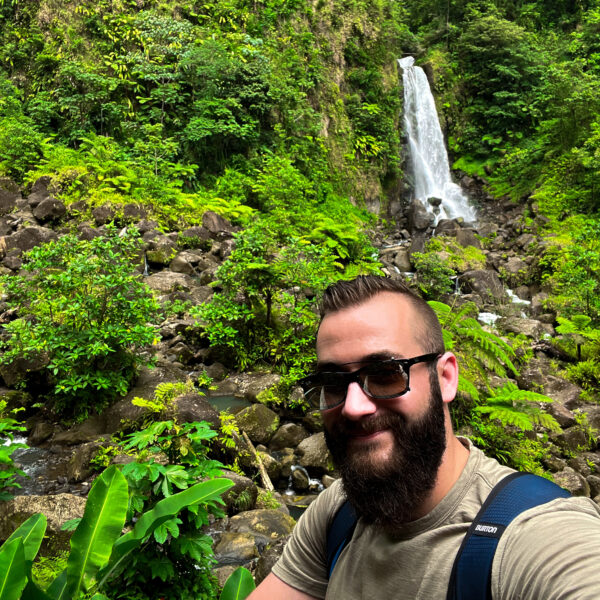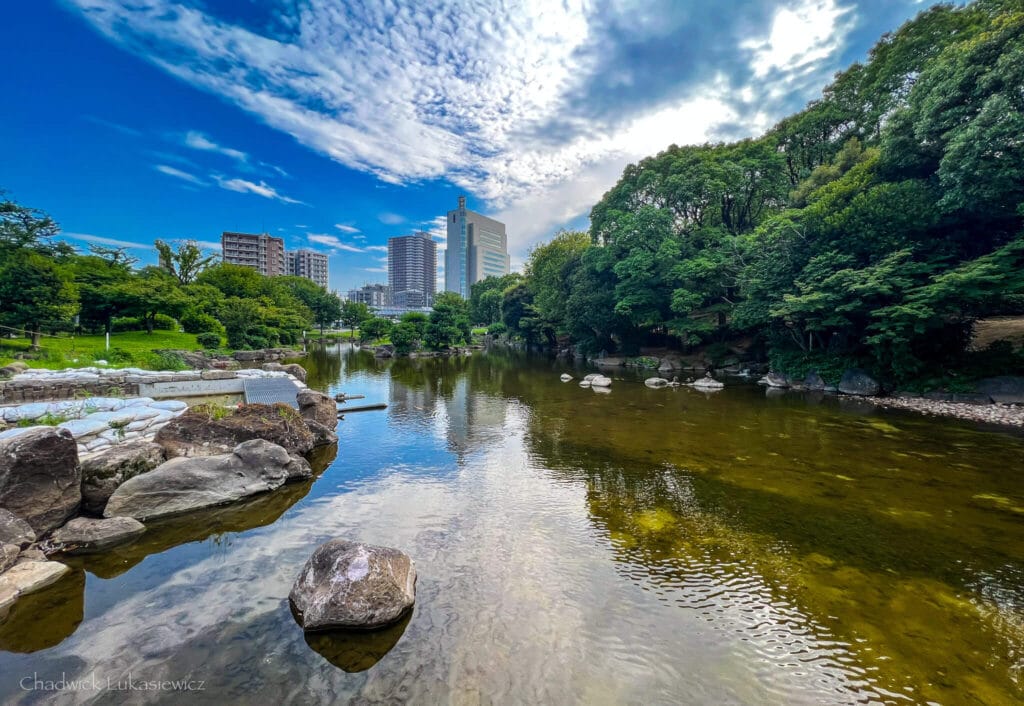Against a brilliant Colorado blue sky, snow-covered peaks stretch across the horizon like nature’s cathedral, their jagged silhouettes etched crisp and clear in the mountain air. The only sound is the soft crunch of snow beneath your boots and your steady breath visible in the crisp mountain air.
For neurodivergent mountain lovers, these precious moments of solitude aren’t just beautiful—they’re essential.
As a Licensed Professional Counselor with AuDHD and Colorado local, I’ve spent years uncovering hidden sanctuaries on these slopes where the noise fades, the air sharpens, and the mind can truly breathe.
After two spine surgeries in my mid-20s—including a lumbar fusion at 25 that nearly ended my snowboarding journey—I discovered that finding these quiet spots isn’t just about escape.
It’s about creating space where our minds can thrive; where the overwhelming buzz of a busy resort and crowds transforms into the peaceful rhythm of perfect turns.
I get it. The sensory overwhelm of crowded slopes, the anxiety of busy lift lines, the challenge of finding that perfect moment of peace amidst the mountain’s energy—it can feel impossible some days.
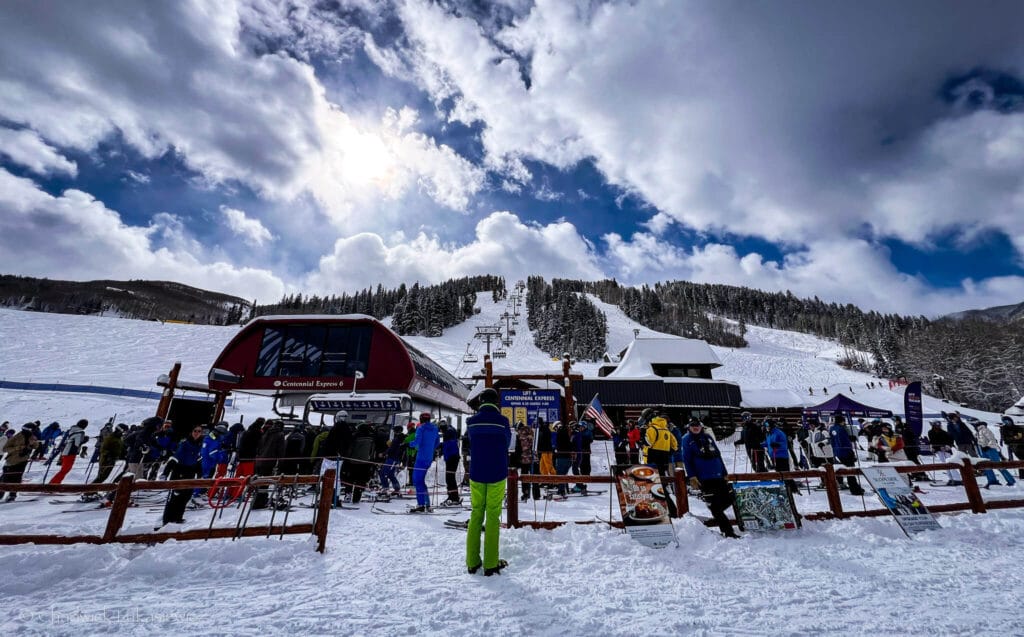
But what if I told you that hidden within each of Colorado’s premier resorts are pockets of tranquility just waiting to be discovered?
Places where you can find your flow, relax in nature, capture breathtaking photos, and experience the mountain in a way that works with, not against, your neurodivergent needs.
Here some of my favorite hidden gems, seen through my lens.
Beaver Creek’s Hidden Quiet Spots
Let me take you to my favorite peaceful corners of Beaver Creek, where the chaos of a busy resort day melts away into pristine solitude. These spots have become my sanctuary—especially during my recovery journey after spine surgery, when finding gentle terrain with natural sound dampening was essential.
Strawberry Park Express: Nature’s Sound Chamber
A snow-silent escape accessed by Chair 12
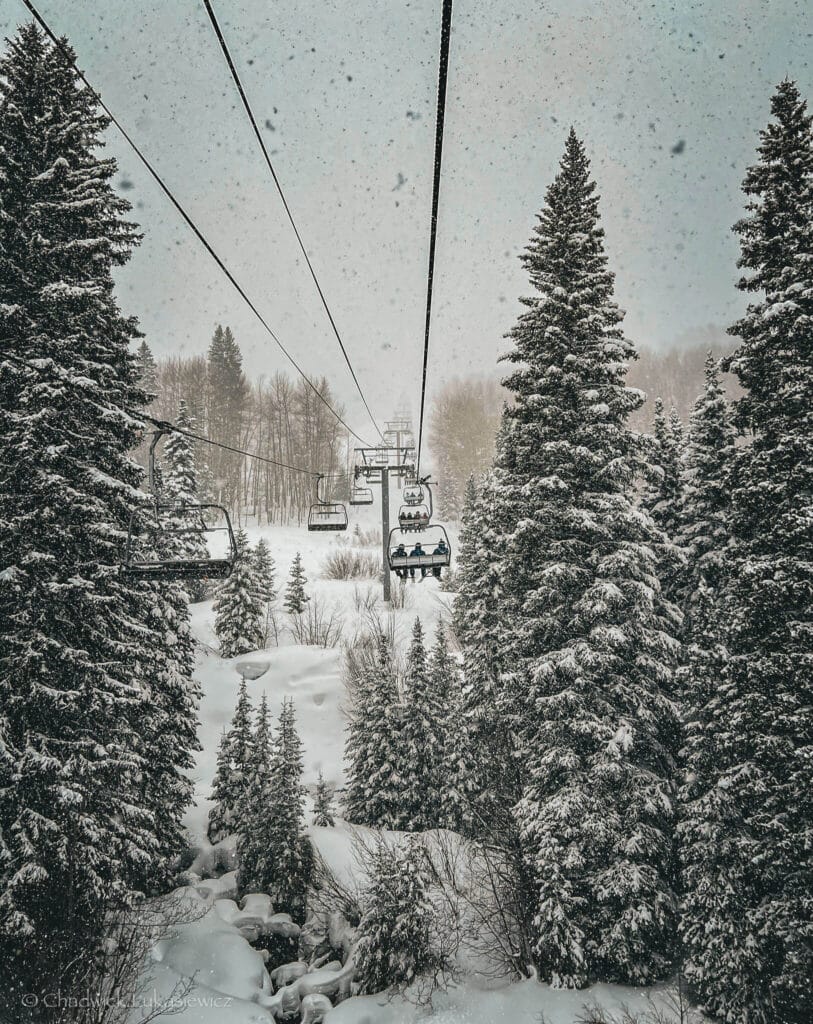
Tucked away from the main resort bustle, Strawberry Park Express offers what I call a sensory sanctuary. The densely packed evergreens create natural sound barriers, while the wide, rolling terrain provides plenty of space for carves and turns.
Best Times to Visit:
- First chair through 10 AM for pristine corduroy and silence
- 2-3 PM when crowds migrate to lower mountain
- Snowy days when limited visibility keeps crowds away
Sensory Considerations:
- Tree-lined runs provide visual rhythm for focus
- Natural sound dampening from snow-laden branches
- Multiple bail-out points for overwhelm management
- Wide runs allow comfortable space from other riders and skiers
Photography Tip: Use the falling snow and fog as natural diffusers. The low contrast conditions create ethereal scenes, especially when framing through the snow-covered trees.
Stone Creek Chutes: Dawn’s Private Powder Theatre
Where early birds find perfect peace
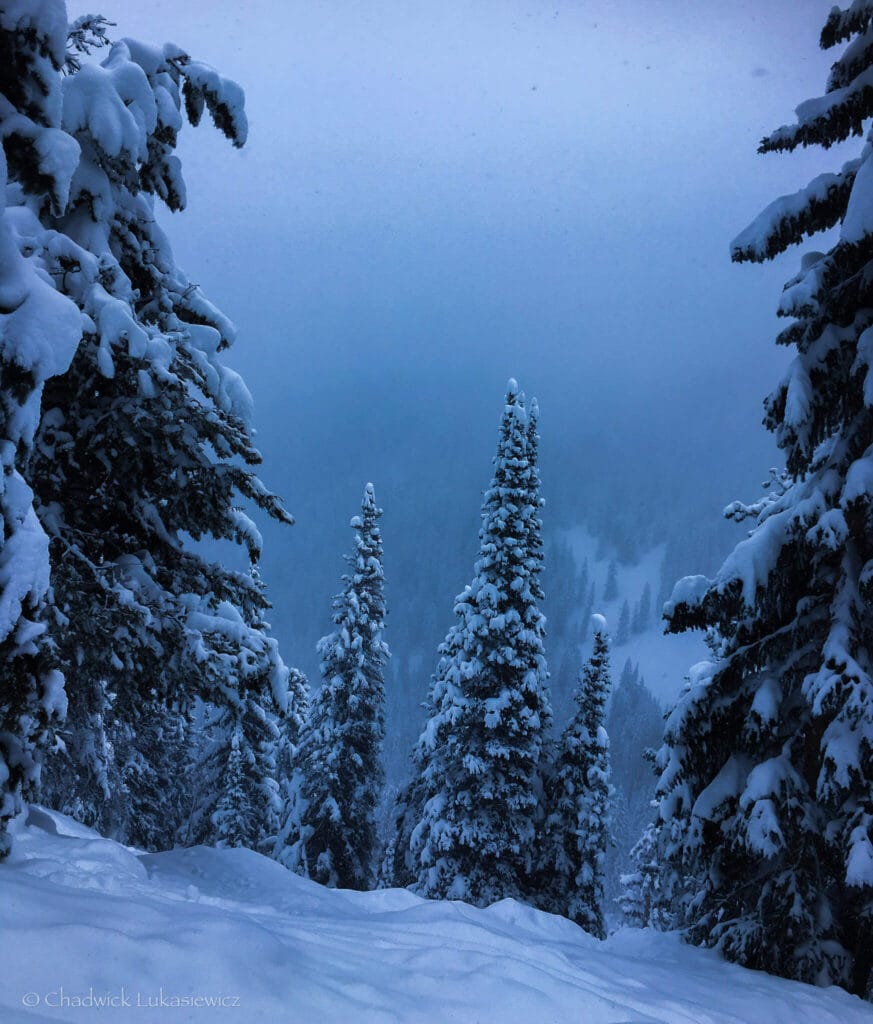
This is where I often start my day, arriving just as the first light paints the snow in surreal shades of blue. The unique terrain creates natural alcoves perfect for both rest and photography.
Finding Your Space:
- Access via Rose Bowl before peak hours
- Multiple natural rest spots between tree islands
- Wide enough chutes for comfortable snowboard navigation
- Natural half-pipes create playful flow opportunities
Photographer’s Notes:
- Golden and blue hour creates dramatic shadows
- Snow-laden trees frame natural vignettes
- Storm days offer moody shooting conditions
- Multiple elevated vantage points for compositions
Pro Tip: On storm days, the lower visibility actually enhances the peaceful atmosphere here. The falling snow creates a natural white noise effect that’s incredibly grounding for an overstimulated mind.
These spots have become more than just quiet zones for me—they’re where I’ve rebuilt my confidence after surgery and learned to trust my body again. Whether you’re seeking a sensory break or just a moment of mountain solitude, these sensory-friendly havens rarely disappoint.
Breckenridge’s Peaceful Pockets
There’s something enchanting about Peak 10 that most visitors to Breck never discover. While crowds flock to the more famous terrain of Peak 8, this southern giant stands quietly apart, offering wide-open spaces and peaceful solitude for those willing to venture just a little further.
It’s become my go-to sanctuary when I need to hear nothing but the whisper of wind and the sound of my board carving through fresh snow. Here are two of my favorite hidden corners on this overlooked peak.
Peak 10 Summit: Falcon’s Quiet Kingdom
Where wide-open freedom meets peaceful progression
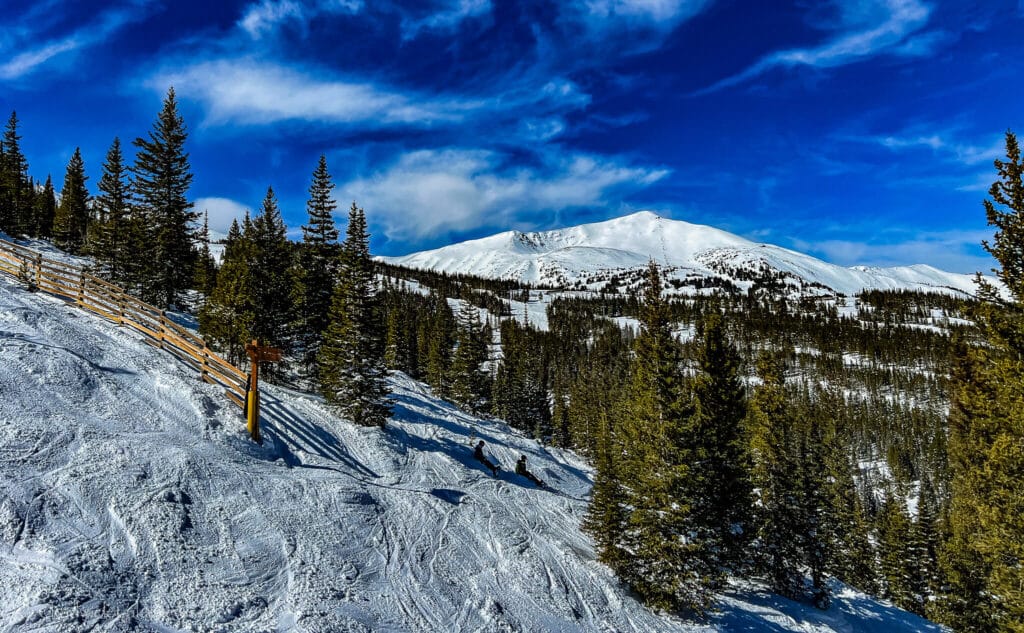
The Falcon SuperChair area offers something rare: challenging terrain with enough space to breathe. Up here, the expansive views of the Tenmile Range create a natural sense of calm, while the wide-open runs provide plenty of room to work through any anxiety about steeper terrain.
Crystal’s consistent pitch and Centennial’s rolling terrain offer perfect progression options, each with their own unique rhythm for mindful turns.
Best Times to Visit:
- After 1 PM when morning crowds thin
- Bluebird days for confidence-building visibility
- Weekdays for maximum solitude
- Perfect for powder day progression sessions
Terrain Notes:
- Multiple bail-out options to Peak 9
- Wide runs reduce proximity anxiety
- Natural rest zones at trail intersections
- Clear sight lines for better planning
Photography Tip: The afternoon light here creates stunning contrasts between snow and sky. Position yourself to capture the dramatic ridge lines against that deep Colorado blue.
Spitfire: The Hidden Traverse
A peaceful path between peaks
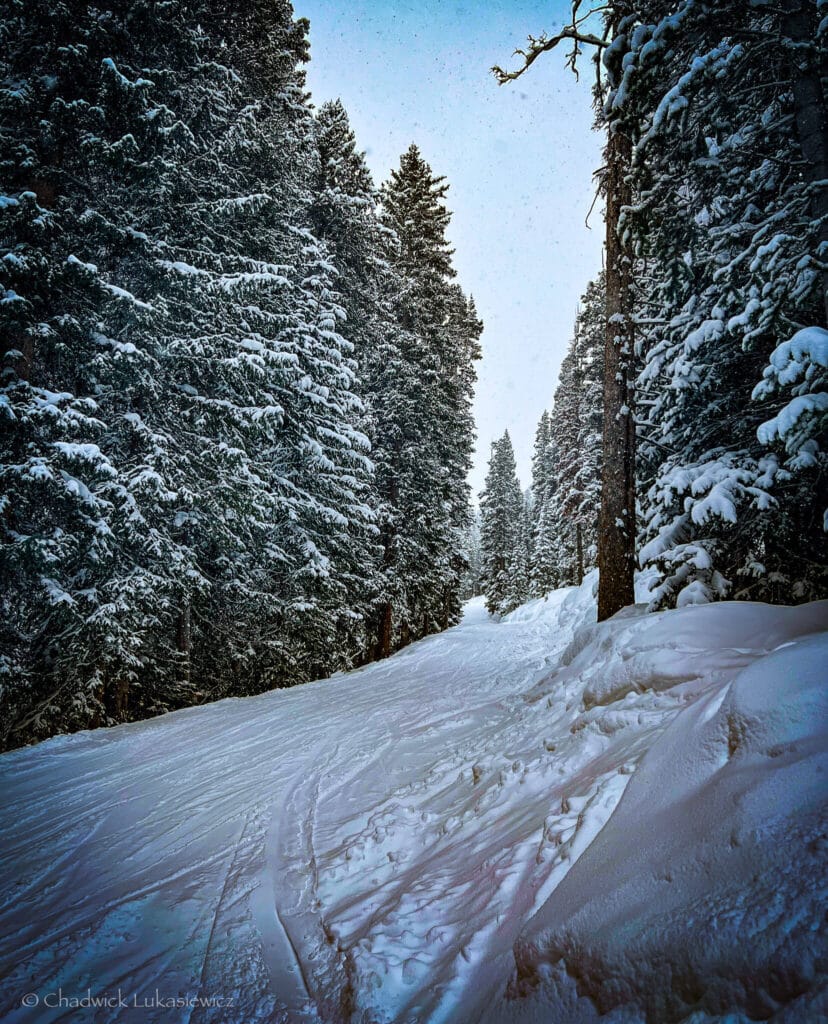
This overlooked connector trail from Peak 10 back to Peak 9 is my secret weapon for finding mid-day peace. The gentle grade and tree-lined edges create a perfect sensory break between more challenging runs. It’s also a prime spot for cruising on powder days.
Finding Your Flow:
- Access from upper Falcon SuperChair
- Excellent for cruising and practicing carves
- Trees provide sound dampening
- Tons of powder stashes on storm days
Photographer’s Notes:
- Evening light filters beautifully through trees
- Natural framing from snow-laden branches
- Capture other riders from safe vantage points
- Golden hour creates mezmerizing snow textures
Pro Tip: On busy days, use Spitfire as your reset run. The consistent grade and peaceful atmosphere provide a perfect opportunity to practice mindful turns and regulated breathing.
Keystone’s Quiet Corners
Keystone holds a special allure for neurodivergent riders—offering both hidden daytime sanctuaries and the unique serenity of night skiing. The mountain transforms as the day progresses, providing distinct experiences for those seeking sensory peace.
The Windows: Nature’s Gladed Gallery
Where trees create corridors of calm
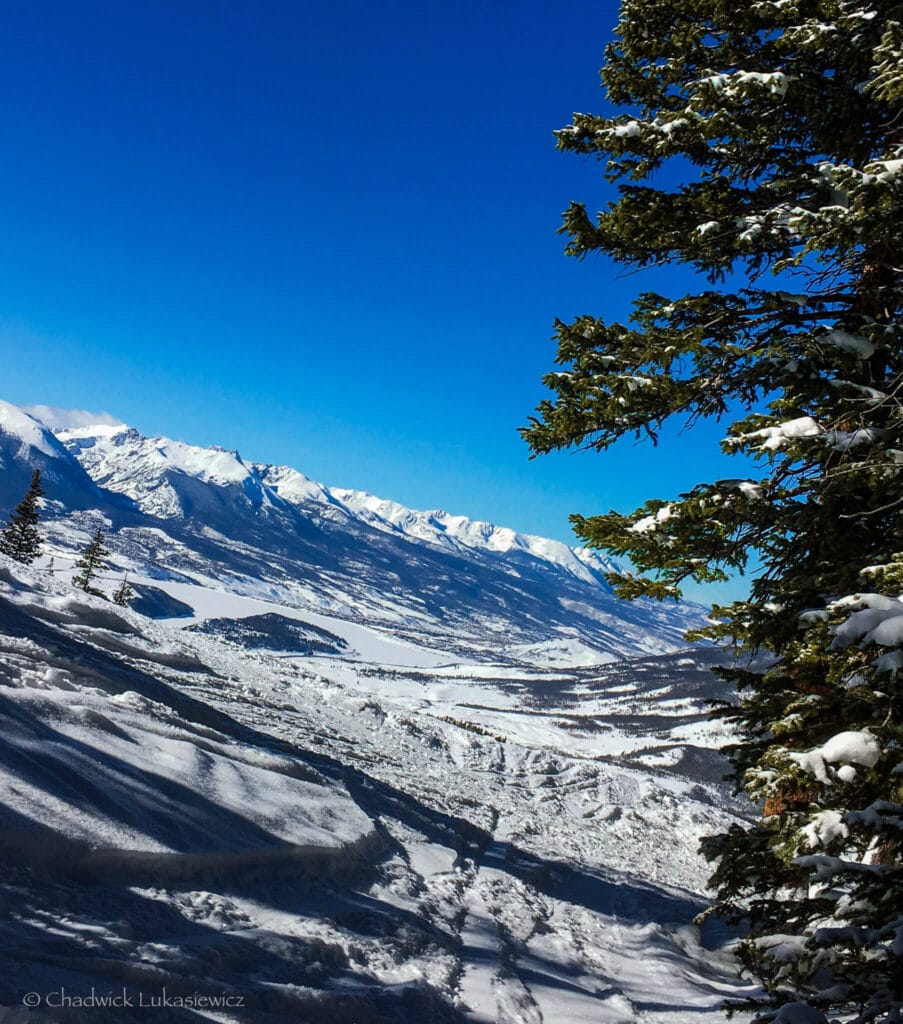
The Windows glades offer something truly special: naturally spaced trees that create perfect zones of quiet while maintaining clear sight lines for confident navigation. These pockets of peace provide ideal rest spots with breathtaking valley views.
Finding Your Space:
- Access via the Outback Express lift
- Multiple entry points for comfort level
- Discover hidden powder pockets between the well-spaced lodgepole pines
- Follow cat tracks back to Mozart or Last Alamo when ready
Sensory Considerations:
- Tree spacing reduces visual overwhelm
- Natural sound dampening from forest
- Protection from wind and harsh weather
- Plenty of space for comfortable turns
Photography Tip: The afternoon light streaming through the trees creates stunning opportunities for capturing snow textures and shadow play.
Schoolmarm at Sunset: Night Skiing Serenity
Where the longest run in Summit County transforms
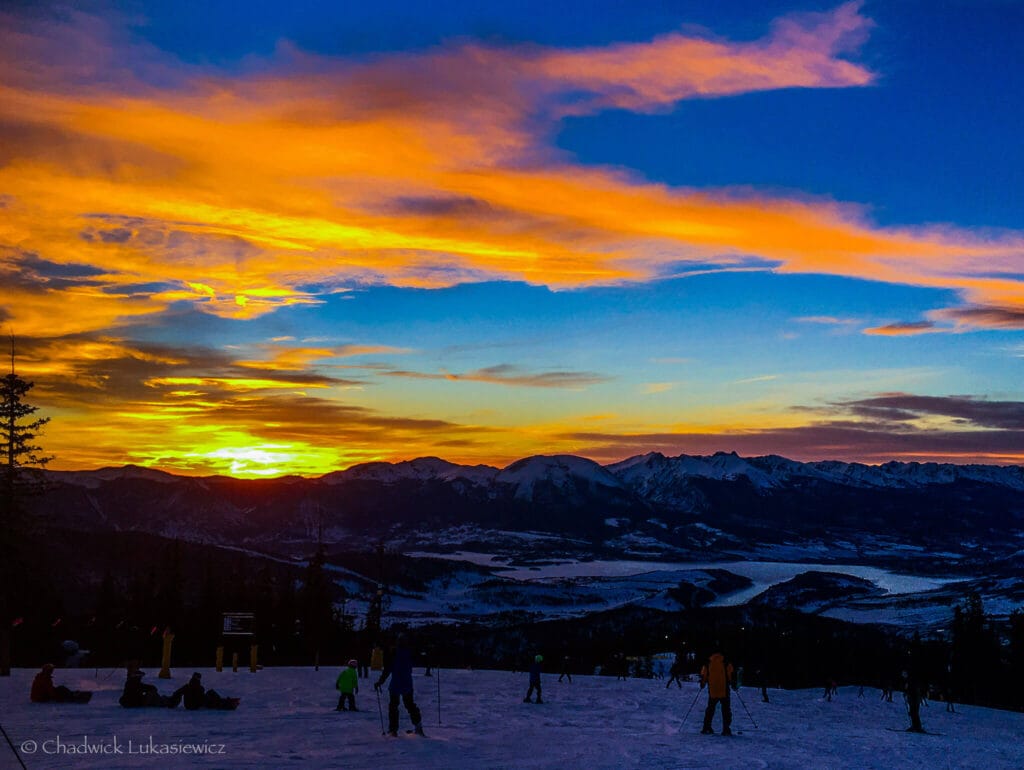
As day transitions to night, Schoolmarm—Summit County’s longest run—becomes a different world. The crowds thin, the sensory input softens, and the mountain offers a uniquely peaceful experience as captivating sunset views transition to cool carvings beneath the stars.
Evening Evolution:
- Dramatically reduced crowds after sunset
- Gentle lighting creates a calm atmosphere
- Perfect for mindful progression
- Reservoir views add stunning depth
Photographer’s Notes:
- Golden hour creates dramatic valley shadows
- Dillon Reservoir reflects sunset colors
- Night lighting offers unique compositions
- Long exposures capture peaceful emptiness
Pro Tip: For the ultimate sensory reset, try a sunset lap followed by a night run. The transition from golden hour to twilight on Schoolmarm is pure mountain magic.
Just watch out for that ice that can build up on cold nights when the sun goes down!
Vail’s Serene Spaces
If Vail’s front side is a symphony of perfectly groomed runs, its back bowls are nature’s meditation room—vast spaces where the mountain’s true character reveals itself in silence and solitude.
Here, the sheer scale of the landscape creates a natural sanctuary for neurodivergent minds seeking connection with the mountains.
Sun Up & Sun Down Bowls: Where Vastness Meets Tranquility
Nature’s amphitheater of peace
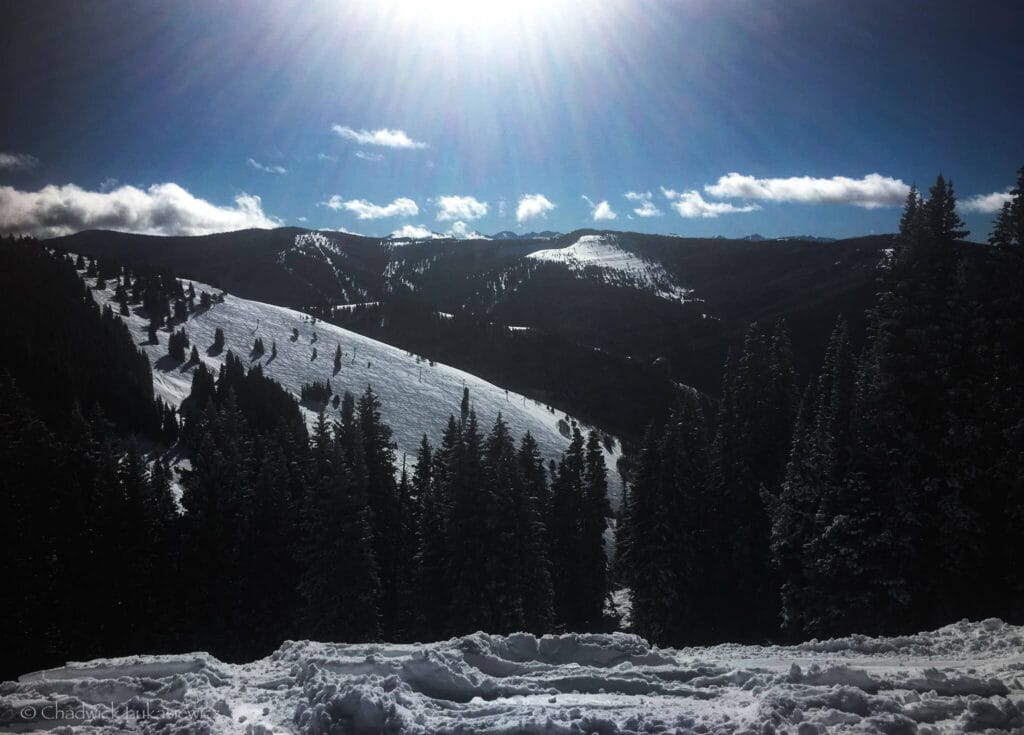
There’s something mezmerizing about standing at the rim of Vail’s legendary back bowls. The natural bowl shape doesn’t just create perfect snow conditions—it forms an acoustic environment that softens the world’s edges, leaving you with nothing but the whisper of wind and the sound of your own movement.
Finding Your Space:
- Arrive at first chair for pristine solitude
- Choose between Sun Up’s gentle ridge rolls or Sun Down’s steeper pitches
- Natural rhythm of terrain guides your descent
- Wide-open spaces eliminate proximity stress
Sensory Considerations:
- Natural amphitheater effect creates a peaceful acoustic bubble
- Vast sight lines reduce visual overwhelm
- Mongolian-style bowls offer rare 360-degree mountain views
- Freedom to set your own pace and path
Photographer’s Notes:
- Morning light creates dramatic shadows
- Natural ridgelines frame compositions
- Cloud movements add dynamic elements
- Scale provides endless creative opportunities
Pro Tip: On powder days, the back bowls transform into a sensory deprivation chamber of sorts—just you, the snow, and the mountain’s natural contours guiding you home.
While Vail’s back bowls are rated for advanced riders, don’t let that intimidate you! The wide-open terrain allows you to choose your own level of challenge, from gentle traverses to direct fall-line adventures.
It’s the perfect place to practice reading terrain while feeling completely held by the mountain’s natural embrace, and away from the crowds.
Finding Your Flow: A Neurodivergent Guide to Mountain Peace
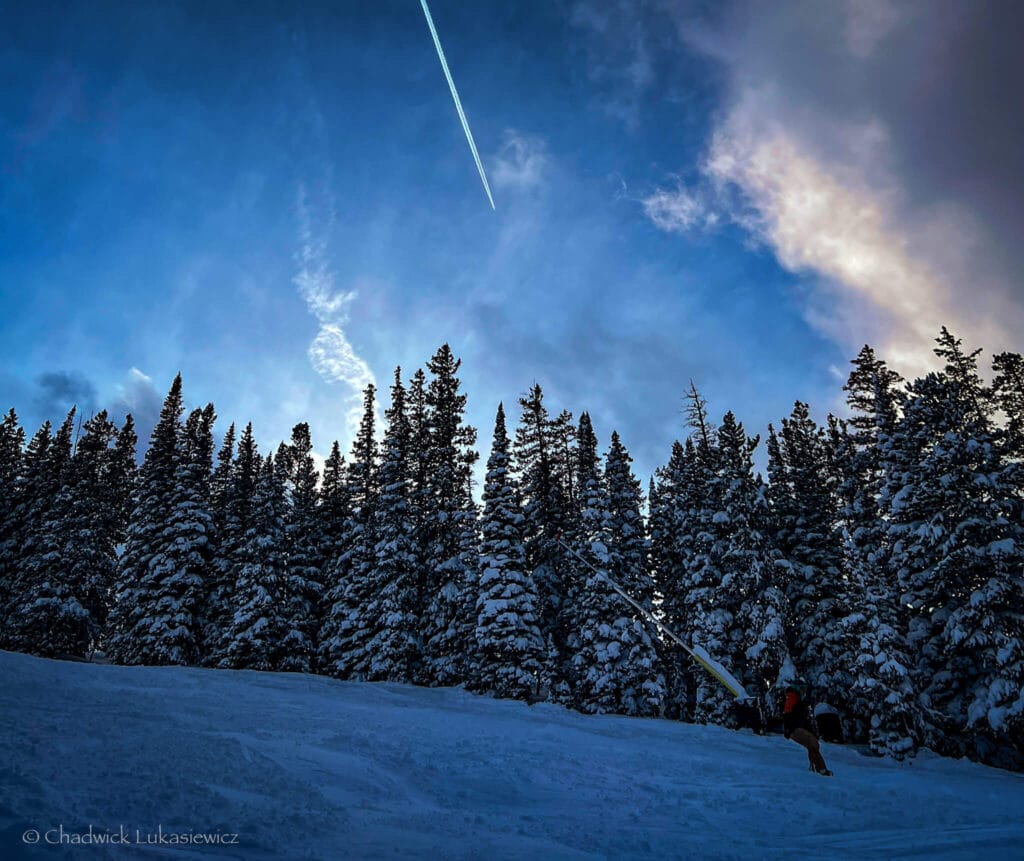
Beyond these specific sanctuaries lies a deeper art: creating moments of peace wherever you find yourself on the mountain. Over the years navigating these slopes, I’ve developed strategies that transform any run into an opportunity for mindful adventure.
Creating “Reset Zones” Throughout Your Day
Strategic sanctuaries for sensory regulation
The key to a peaceful mountain day isn’t just knowing where to go—it’s knowing when and how to pause. I’ve found that intentionally planning these moments makes all the difference:
Natural Havens:
- Tree-lined runs and glades offer sound dampening
- South-facing spots provide warming breaks
- Ski patrol hut areas guarantee quiet zones
- Wind-protected pockets for sensory relief
Timing Your Peace:
- Early morning runs (before 10 AM) for pristine snow
- Lunch hour (1-2 PM) for empty slopes
- Golden hour sessions for serene light
- Night skiing for sensory simplicity
Transforming Overwhelm into Flow
Where challenges become opportunities
Your neurodivergent traits can become superpowers on the mountain—it’s all about working with your brain’s natural tendencies:
Movement as Meditation:
- Use turn rhythm for mindful focus
- Transform lift rides into reset moments
- Create personal space bubbles in busy areas
- Practice dynamic edge control for grounding
Environmental Awareness:
- Read terrain for natural sound barriers
- Identify multiple escape routes
- Use trail aspects for optimal conditions
- Create micro-sanctuaries in busy zones
Mountain Mindfulness Techniques
Finding presence in motion
The mountain offers unique opportunities for active mindfulness that work particularly well for neurodivergent minds:
Grounding Practices:
- Snow contact awareness while riding
- Breath synchronization with turns
- Edge pressure focus for present-moment awareness
- Carving patterns for flow states
Energy Channel:
- Use hyperfocus for terrain reading
- Transform anxiety into heightened awareness
- Channel music into dynamic riding
- Build confidence through progressive challenges
Power Breathing & Cold Exposure:
- Take 30 quick, deep breaths followed by a calm hold during lift rides
- Embrace the mountain’s natural cold therapy to boost mental clarity
- Use breath retention between runs as a reset button
- Let brief cold exposure on storm days build natural resilience
Building Your Mountain Routine
Structure that supports freedom
Create a flexible framework that honors both your need for routine and your capacity for spontaneity:
Daily Rhythm:
- Morning preparation rituals
- Strategic transition periods
- Energy management checkpoints
- End-day integration practices
Adaptive Planning:
- Weather-responsive strategies
- Crowd pattern navigation
- Imperfect condition alternatives
- Flexible progression paths
Pro Tip: Remember that mountain peace isn’t about perfection—it’s about finding your unique rhythm in the beautiful chaos of nature.
Embracing Mountain Magic: Your Neurodivergent Adventure Awaits
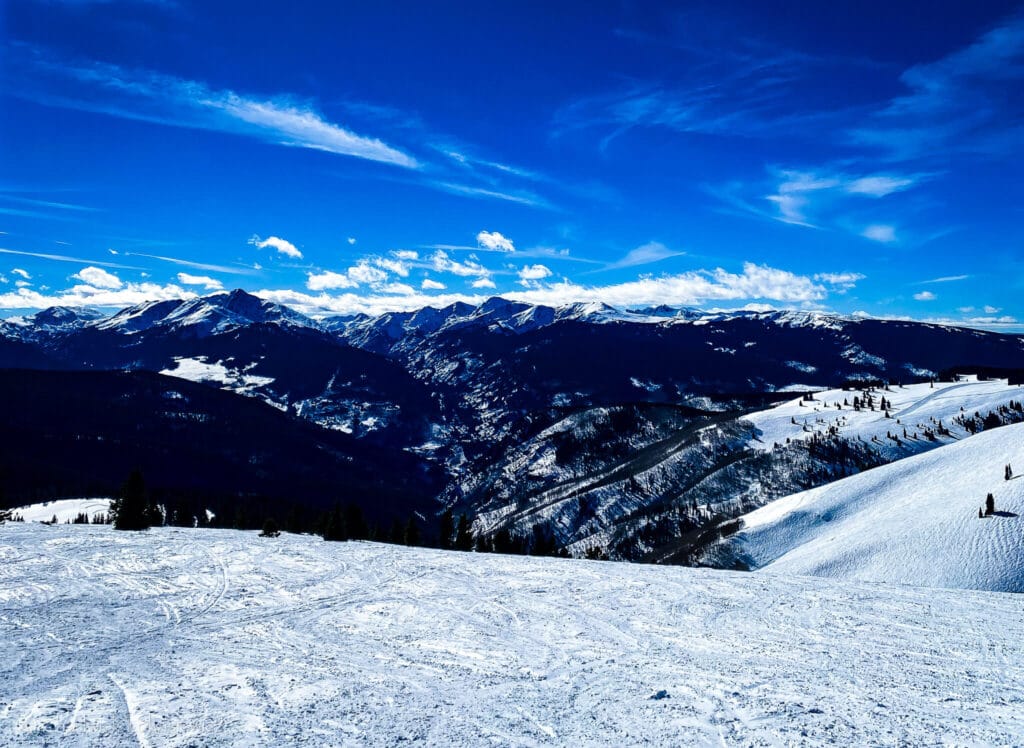
As we wrap up our journey through hidden sanctuaries at Colorado’s ski resorts, remember that these quiet spaces aren’t just spots on a trail map—they’re invitations to discover how your unique mind connects with the mountain.
Personal Paths to Peace:
- Start with familiar spots and expand your comfort zone gradually
- Trust your sensory instincts about timing and conditions
- Notice which terrain features help you feel most grounded
- Create your own map of mountain sanctuaries
These quiet corners have been more than just escape routes for me—they’ve become classrooms for self-discovery and growth.
That morning silence in Stone Creek Chutes taught me about finding strength after surgery. Those sunset sessions on Schoolmarm showed me how ADHD hyperfocus could transform into photographic flow.
Each peaceful pocket has offered its own lesson in finding joy amidst the beautiful chaos of mountain life.
I hope sharing these sanctuaries helps you find your own path to peace on the mountain. Whether you’re seeking sensory calm, creative inspiration, or simply a moment to breathe in the crisp alpine air, Colorado’s peaks hold space for our unique way of experiencing the world.
See you out on the slopes!
· · ·
While I share insights from my experience as a Licensed Professional Counselor-Supervisor and my personal journey with AuDHD, this content is for educational and informational purposes only. It is not a substitute for professional mental health services, medical advice, diagnosis, or treatment. Every individual’s mental health journey is unique – what works for one person may not work for another. If you’re experiencing mental health challenges, please consult with qualified healthcare providers in your area. For immediate support during a crisis, contact local emergency services or call/text 988.
· · ·
Some of the links in this post are affiliate links, meaning I earn a commission if you click through and make a purchase – at no additional cost to you. As a neurodivergent traveler and mental health professional, I only recommend products I’ve personally tested and found genuinely helpful. Read our full affiliate disclosure in our privacy policy.

